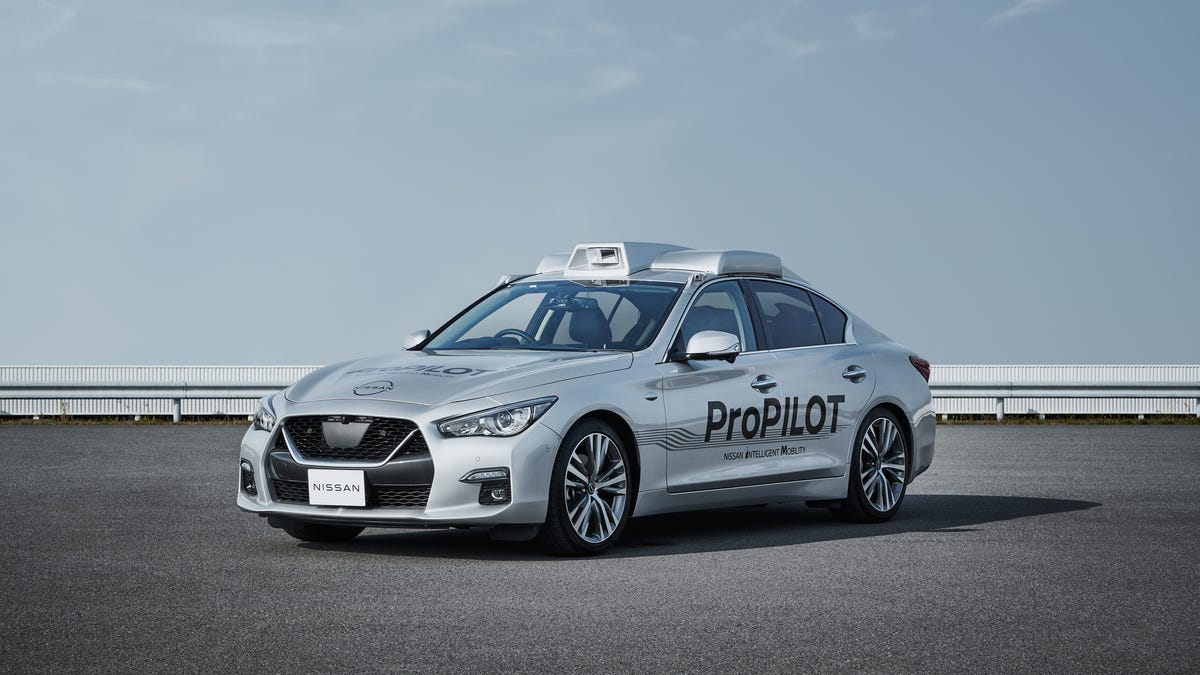Nissan ProPilot Concept Zero Prototype Uses Lidar to Dodge Collisions
With next-generation lidar sensing and enhanced avoidance of complex collisions, Nissan inches towards a zero-fatality future with its new prototype.
Japanese automaker Nissan on Monday offered a peek at the next step in its march towards a "collision-free" and "zero-fatality" vehicle, debuting a new ProPilot prototype vehicle, the ProPilot Concept Zero, featuring next-generation lidar technology that will be used to power autonomous driving development.
The announcement comes as part of Nissan's larger Ambition 2030 road map revealed in November. The road map also includes the introduction of 15 brand-new EVs and 23 electrified models by 2030, the development and launch of all-solid-state battery technologies by 2028 and, as announced Monday, the development of the next generation of ProPilot driver-aid technology with new lidar sensing making its way into "virtually every new model by fiscal year 2030."
The prototype vehicle used to showcase this new tech is based on the Nissan Skyline sedan, which is sold here in the States as the Infiniti Q50. The sedan features 10 cameras and seven radar sensors around its perimeter. But the belle of the ball is the forward-looking Luminar lidar sensor located on the roof, where it can get the best view of the road without being obstructed by other vehicles. Nissan says this next-gen sensor's detection distance is over 985 feet, significantly longer than the often less than 525 feet of current lidar arrays. The new sensor also boasts a wider vertical field of view and around twice the resolution.
The optical cameras are good at detecting and categorizing shapes, letters, traffic signs and road markings. Radar excels at distance and speed detection with some sacrifice to latency. Nissan says its new lidar sensor, for its part, will be able to measure space, shape and the speed of objects better than both, with improved latency, bringing the sensing capabilities of the vehicle closer to what human beings can detect.
The next-generation lidar sensor boasts more range and resolution than the current tech.
All three sensor types work together to form what Nissan calls "ground truth perception," a live-updating 360-degree 3D model of the road, vehicles and objects around the ProPilot prototype. This model, along with newly developed prediction algorithms and enhanced autonomous control of the steering and braking systems, will allow the vehicle to step in and assist the driver with more dramatic evasive maneuvers to avoid complex and often unpredictable collisions.
Today, ProPilot can automatically apply the brakes to avoid a stopped vehicle. The next generation of ProPilot will be able to swerve into the next free lane to avoid a collision, brake hard to stop short of a pedestrian and, more impressively, do both at the same time.
Nissan showcased many such complex scenarios in a presentation streamed to journalists this week, including changing multiple lanes to avoid a jack-knifing truck and trailer that suddenly blocks three lanes, slowing and then evading multicar collisions and even dodging items -- like tires or barrels -- kicked over the guardrail by traffic in the opposing lane.
The prototype is able to evade complex collisions, such as dodging a vehicle entering the lane and simultaneously stopping short of a pedestrian.
ProPilot is a driver-assistance technology, but the ultimate aim of its development is autonomous operation. To that end, Nissan also shared a demonstration of address-to-address autonomous driving and the lidar-laced sensor suite's ability to perceive and navigate at low speeds on roads without prescanned map data. This could include entering parking lots or decks, dropping passengers off at the entrance of a venue such as a hotel or restaurant or navigating long driveways.
Nissan's current road map has the next generation of ProPilot arriving sometime between 2025 and 2030. According to the initial Ambition 2030 announcement, Nissan aims to expand its implementation of its flagship driver-aid technology to over 2.5 million Nissan and Infiniti vehicles by 2026 and to incorporate the tech across its entire fleet by 2030.


